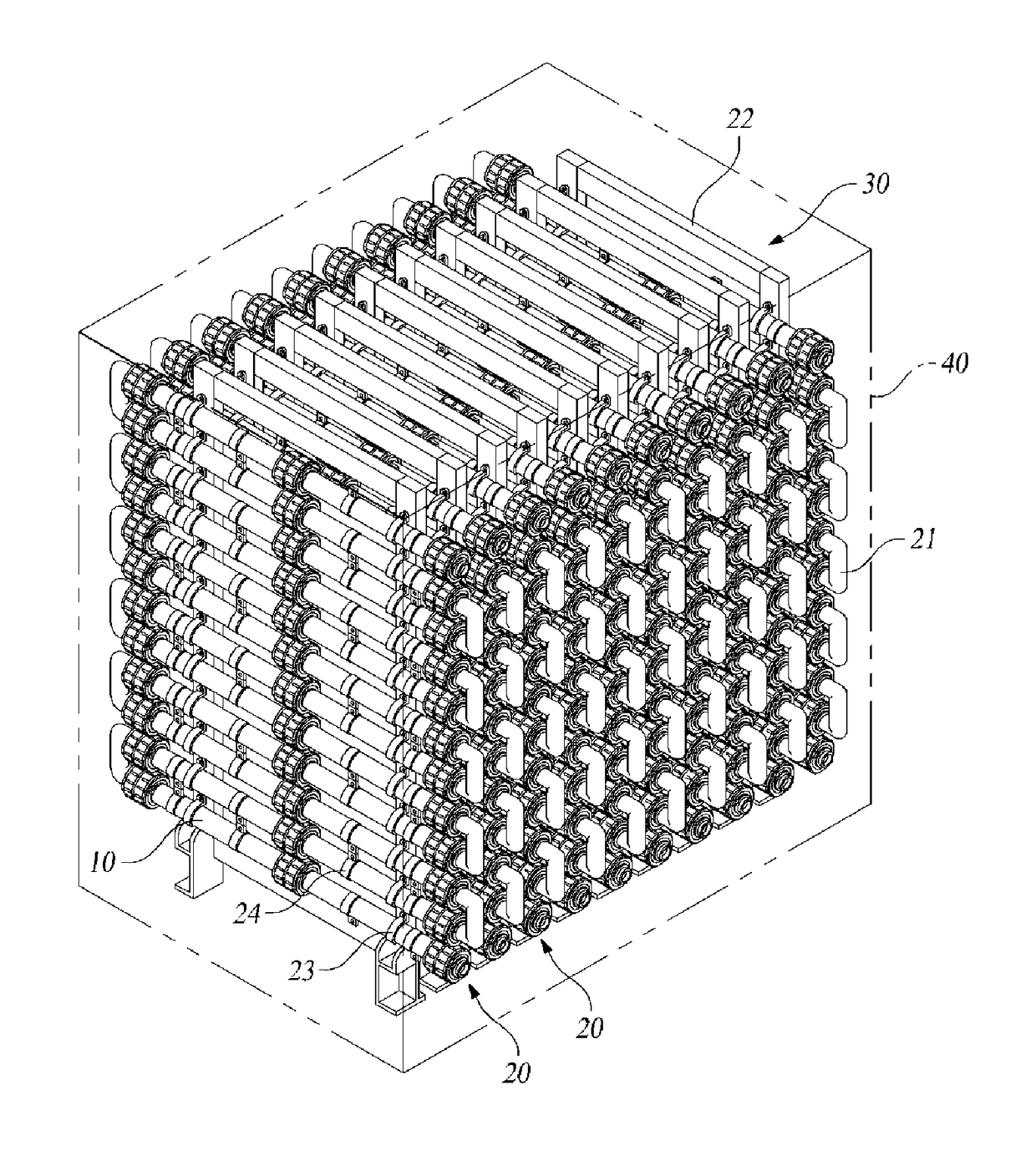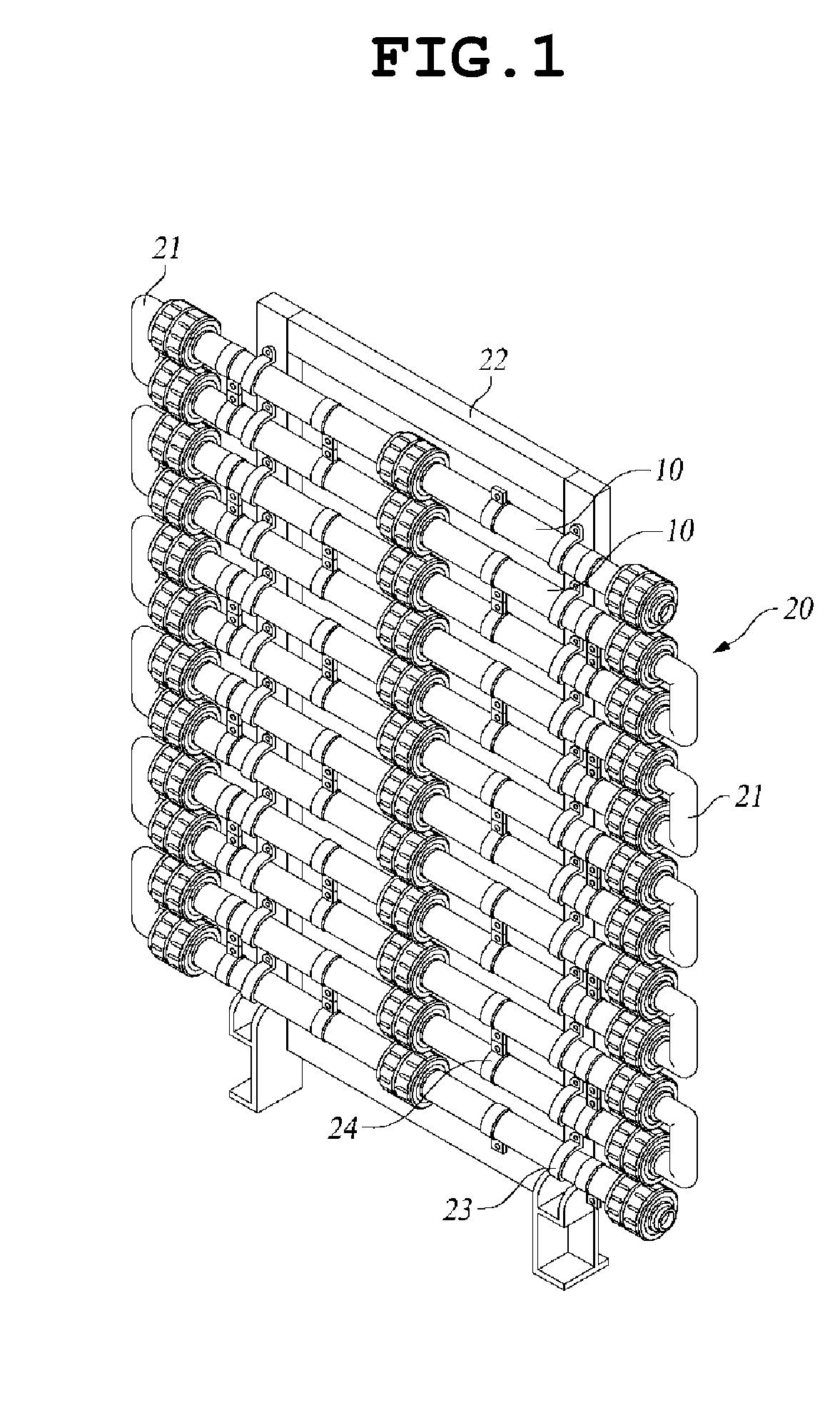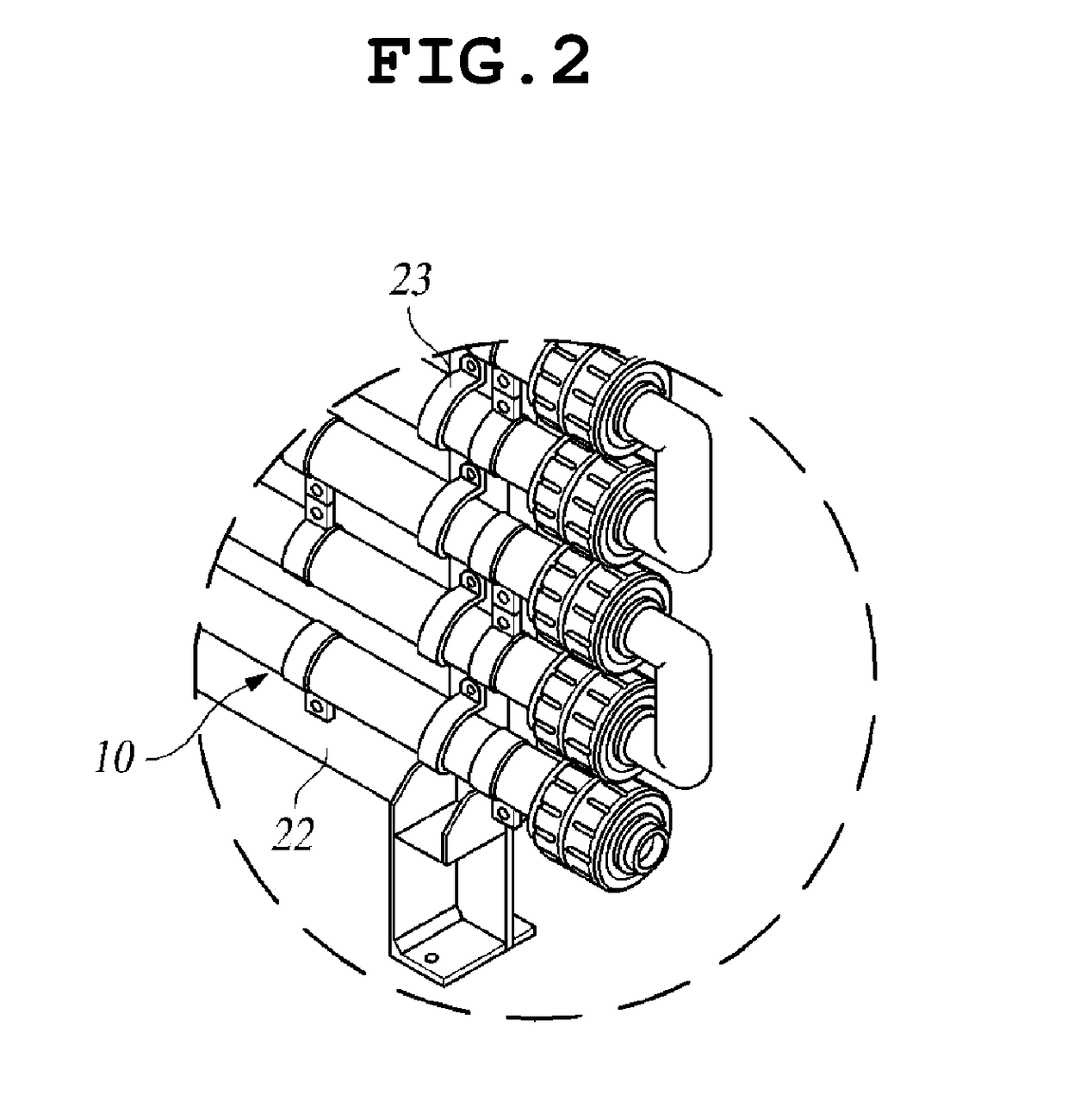Electrolysis module
a technology of electrolysis module and electrode, which is applied in the direction of electrolysis components, water/sludge/sewage treatment, chemistry apparatus and processes, etc., can solve the problems of affecting the flow of fluid, increasing the cell voltage, and affecting the electrolysis efficiency, so as to improve the flow of electrical current, improve the electrolysis efficiency, and high electrical conductivity
- Summary
- Abstract
- Description
- Claims
- Application Information
AI Technical Summary
Benefits of technology
Problems solved by technology
Method used
Image
Examples
Embodiment Construction
[0067]Hereinafter, a pipe-type electrolysis cell according to one embodiment of the invention and an electrolysis module including the pipe-type electrolysis cell will be described with reference to the accompanying drawings.
[0068]With reference to FIGS. 12 to 21, according to one embodiment, an electrolysis module 50 includes a electrolysis unit module 100, a molding case 200, a cell guide member 300, a power cable 400, and a resin layer 500.
[0069]With reference to FIGS. 19 to 27, the electrolysis unit module 100 includes a pipe-type electrolysis cell 110, a connection pipe 120, and an inlet / outlet connection nipple 130.
[0070]With reference to FIGS. 19 to 27, the pipe-type electrolysis cell 110 includes a pair of terminal electrodes, a bipolar electrode, an insulation unit, and a spiral block 118.
[0071]Herein, the pair of terminal electrodes includes inner electrodes 115a and 115b, outer electrodes 114a and 114b, and connection plates 116 by which first ends of the inner electrodes...
PUM
| Property | Measurement | Unit |
|---|---|---|
| electrical conductivity | aaaaa | aaaaa |
| size | aaaaa | aaaaa |
| polarity | aaaaa | aaaaa |
Abstract
Description
Claims
Application Information
 Login to View More
Login to View More - R&D
- Intellectual Property
- Life Sciences
- Materials
- Tech Scout
- Unparalleled Data Quality
- Higher Quality Content
- 60% Fewer Hallucinations
Browse by: Latest US Patents, China's latest patents, Technical Efficacy Thesaurus, Application Domain, Technology Topic, Popular Technical Reports.
© 2025 PatSnap. All rights reserved.Legal|Privacy policy|Modern Slavery Act Transparency Statement|Sitemap|About US| Contact US: help@patsnap.com



